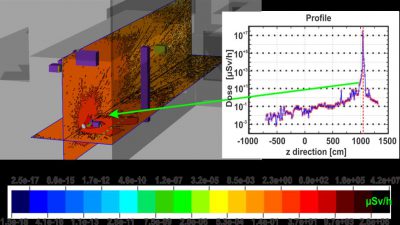Beam-matter interaction and radiation dose measurements
A secondary radiation is being produced when a particle accelerator beam interacts with matter (walls, equipment, air, etc.). The motivation for radiation measurements is determined by the needs of radiation safety, accelerator and particle beam physics, as well as by investigations related to materials and life science.. Radiation dose measurements allow monitoring and control of radiation levels. Measurement results provide the basis for construction of radiation protection walls and shields, and for the development of safety procedures. Radiation measurements are useful for the determination of particle accelerator beam parameters. They are based on measurements by tools and detectors of the beam diagnostic system. Combining beam diagnostics results with numerical simulations of particle transport, radiation dose measurements enable one to calculate parameters for irradiation of samples for materials and life science experiments.
Equipment and tools for radiation measurements available at CANDLE include: dosimeter based on Geiger-Muller counter for the measurement of radiation dose due to natural background and for residual dose measurements; a ionization chamber that can cope with high rate radiation and which is suitable for the measurement of prompt radiation produced during accelerator operation; Faraday cups, YAG screen stations, spectrometer and dosimeters.
Experimental tasks include: 1) search for high levels of Radon concentration in the basement rooms applying a high precision Geiger-Muller counter dosimeter; 2) measurements of the dose rates during AREAL accelerator operation by an ionization chamber and study of the radiation attenuation achieved by the protective wall.
The figure depicts a 2D dose distribution in the AREAL accelerator hall simulated by the FLUKA particle transport code.
